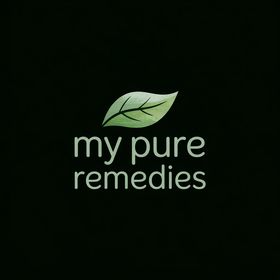The Skin Serum Everyone Is Talking About – Make It at Home
Imagine walking into a garden, where each plant offers something unique for your skin. That’s the beauty of making your own skin serum at home. You’re not just blending ingredients; you’re crafting a personalized potion tailored to your skin’s needs. With just a few essential components, you can create a serum that rivals those high-end products. Curious about how to get started and what ingredients you should use? Let’s explore the art of homemade skincare together.
Key Takeaways
- Homemade skin serums are cost-effective and can be tailored to individual skin needs without harmful chemicals.
- Essential ingredients include carrier oils, essential oils, antioxidants, and hyaluronic acid for maximum effectiveness.
- Follow a simple step-by-step guide to accurately measure, mix, and store your serum in a dark glass bottle.
- Apply the serum post-cleansing for optimal absorption, using a few drops gently pressed into the skin.
- Personalize your serum by adding specific ingredients like tea tree oil for oily skin or vitamin C for aging skin.
Benefits of Homemade Skin Serum
When you create your own skin serum, you’re not just saving money—you’re also tailoring a product that meets your unique skin needs.
A DIY face serum gives you control over the ingredients, allowing you to avoid harmful chemicals often found in store-bought options. It ensures freshness, as you can whip up small batches that suit your skin’s current condition.
Plus, experimenting with various combinations can lead to delightful discoveries that enhance your skin’s texture and radiance. In fact, using natural ingredients not only hydrates but also nourishes your skin, promoting a more youthful appearance.
Ultimately, making your own serum empowers you to embrace a skincare routine that’s both personal and effective, promoting healthier, happier skin.
Essential Ingredients for Your Serum
Crafting your own skin serum opens up a world of possibilities when it comes to selecting the right ingredients.
First, consider carrier oils like jojoba or sweet almond, which provide hydration and nourishment.
Next, add essential oils, such as lavender for calming effects or tea tree for its antibacterial properties.
Incorporate antioxidants like vitamin E to protect your skin from free radicals.
You might also want to include hyaluronic acid for added moisture.
Each ingredient offers unique benefits, allowing you to tailor your serum to your skin’s specific needs.
Additionally, using natural ingredients can enhance the effectiveness and safety of your serum, ensuring a gentle yet potent skincare solution.
With these essentials, you’re on your way to glowing, healthy skin!
Step-by-Step Guide to Making Your Serum
Creating your own skin serum can be a rewarding experience that enhances both your skincare routine and your understanding of your skin’s needs. Follow this simple step-by-step guide to craft your custom serum:
- Gather your essential ingredients
- Measure each ingredient accurately
- Mix thoroughly in a clean glass container
- Transfer the mixture into a dark glass bottle
- Label the bottle with the date and contents
Incorporating natural ingredients, such as effective hydrating serums, can significantly enhance your serum’s ability to combat dry skin. With these steps, you’ll have a personalized serum tailored to your skin type. Enjoy the process, and watch your skin thrive with the natural goodness you’ve created!
Tips for Application and Storage
How can you ensure your homemade skin serum remains effective and safe?
Start by applying it right after cleansing your skin, as this helps lock in moisture.
Use a few drops, gently pressing it into your skin with your fingertips for optimal absorption.
Remember to store your serum in a cool, dark place to prevent oxidation—amber glass bottles work wonders!
Avoid exposing it to direct sunlight or heat.
Lastly, label your serum with the date it was made, and use it within three months for best results. Incorporating natural oils can also enhance your serum’s ability to promote a radiant complexion.
Doing this keeps your skin glowing and your concoction potent!
Personalizing Your Serum for Specific Skin Types
Ever wondered how to tailor a skin serum to meet your unique skin needs? Personalizing your serum can maximize its benefits, ensuring it targets your specific concerns. Here’s how to customize it:
- Oily Skin: Add tea tree oil for its antibacterial properties.
- Dry Skin: Incorporate hyaluronic acid for hydration.
- Sensitive Skin: Use chamomile or aloe vera for soothing effects.
- Aging Skin: Include vitamin C for brightening and collagen support.
- Acne-Prone Skin: Mix in salicylic acid to combat breakouts. Additionally, using homemade skincare products can enhance the effectiveness of your personalized formulations.





